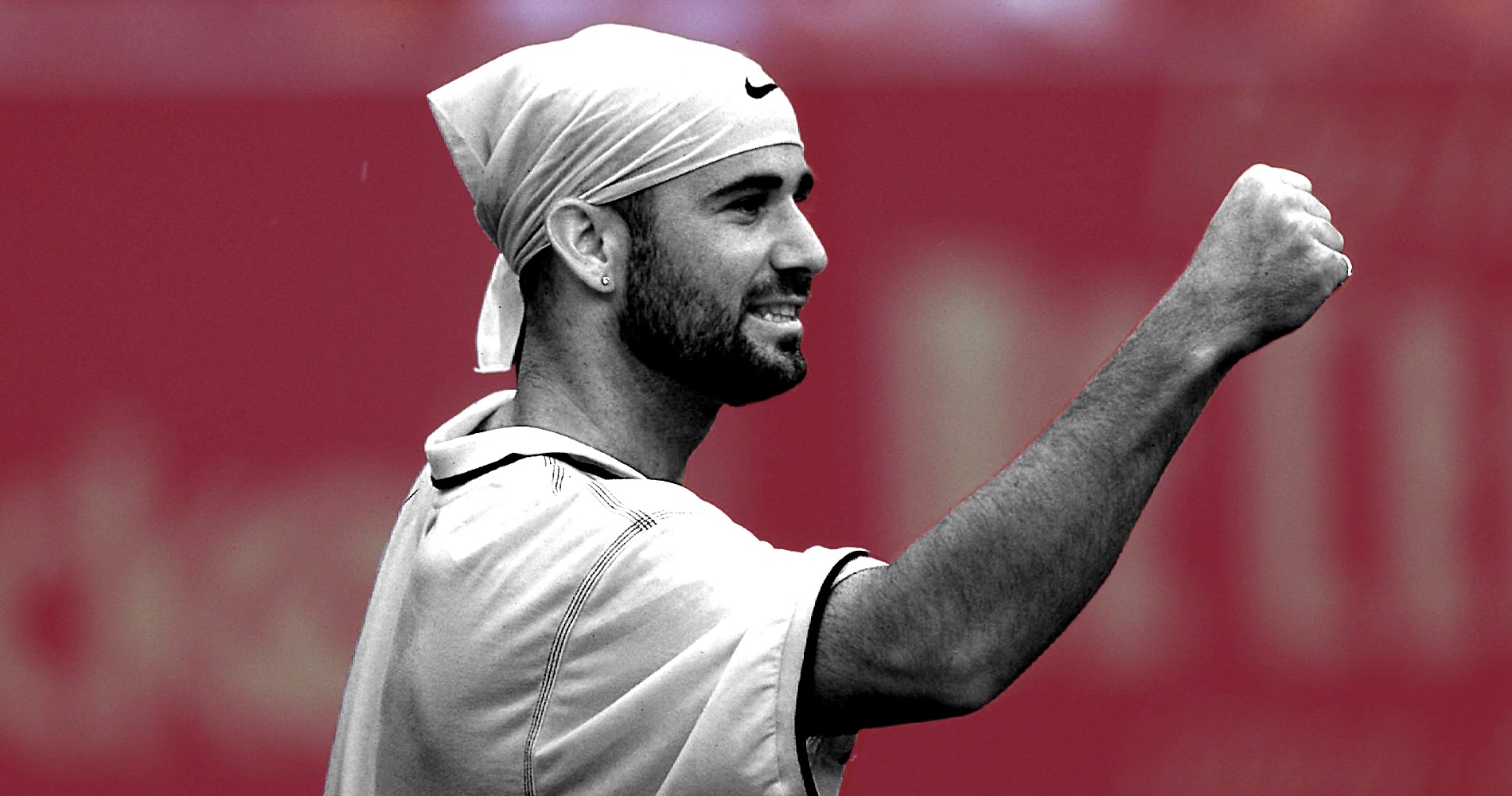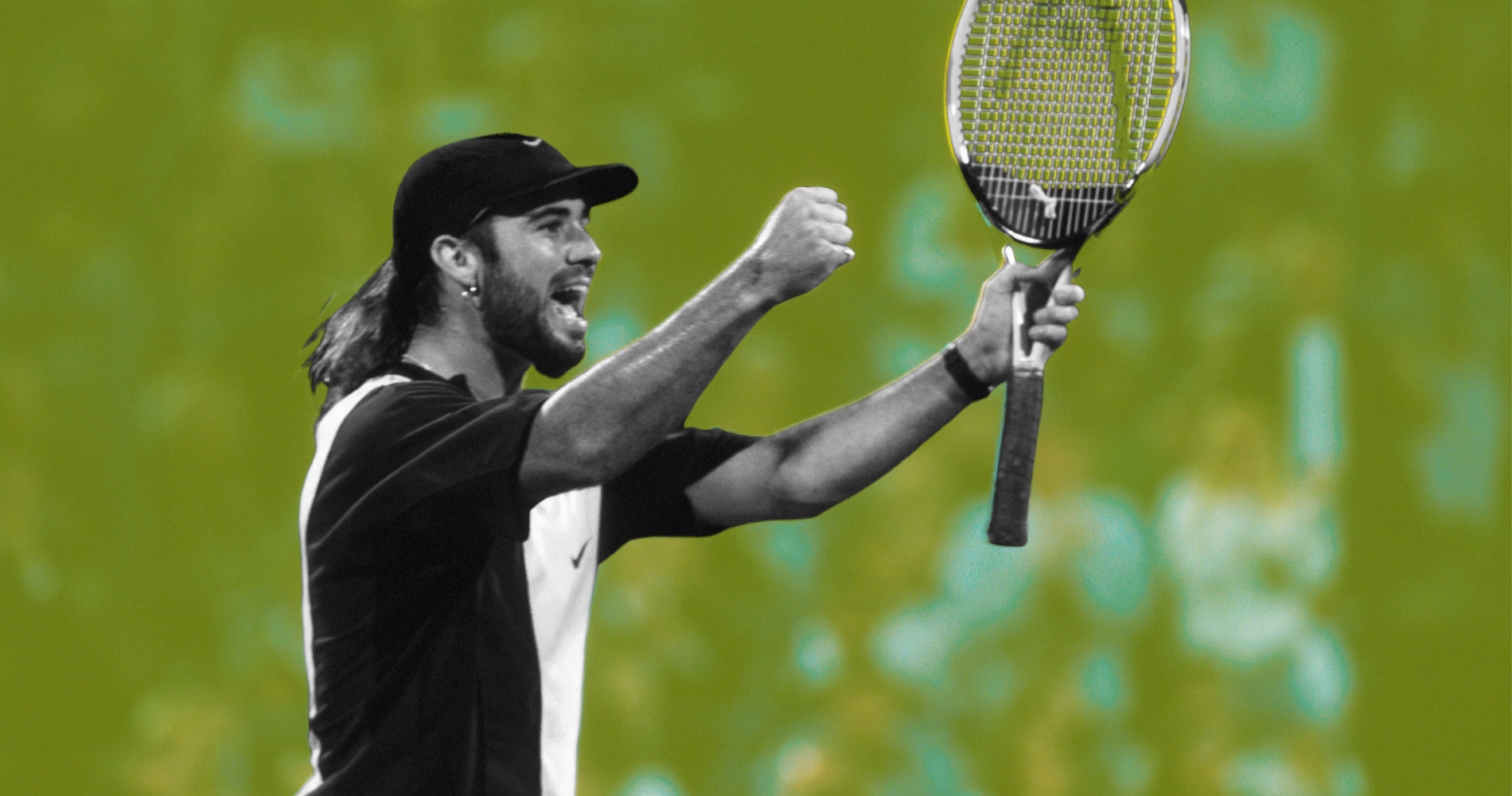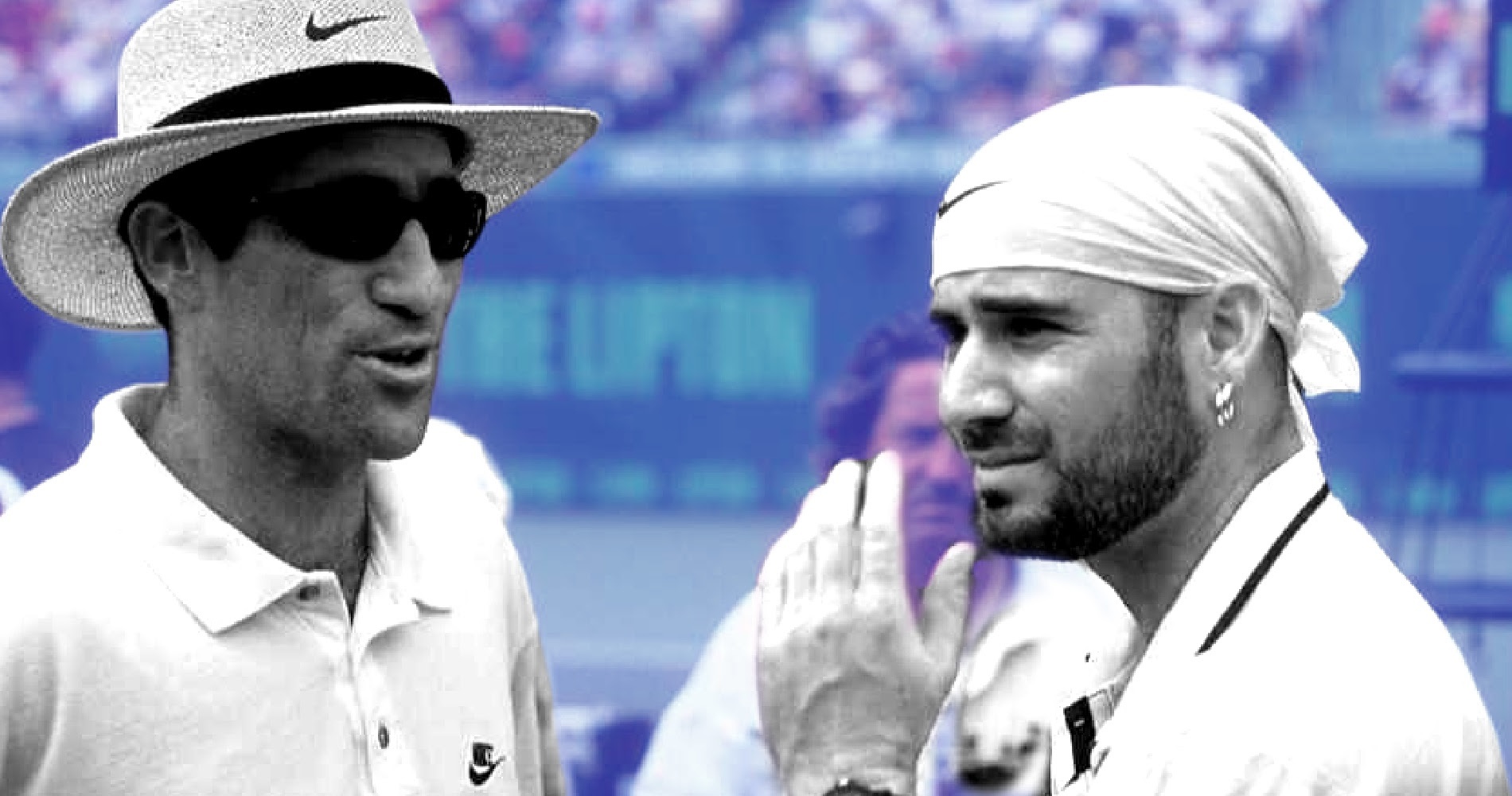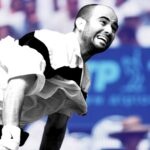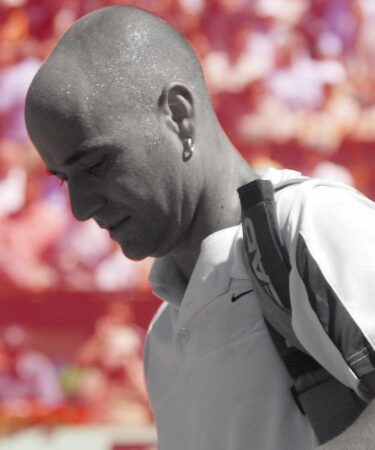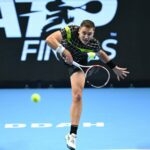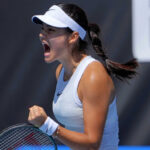April 10, 1995: The day Andre Agassi became world No 1 for the first time
Every day, Tennis Majors looks back at the biggest moments in tennis history. On April 10, 1995, Andre Agassi became world No 1 for the first time in his career
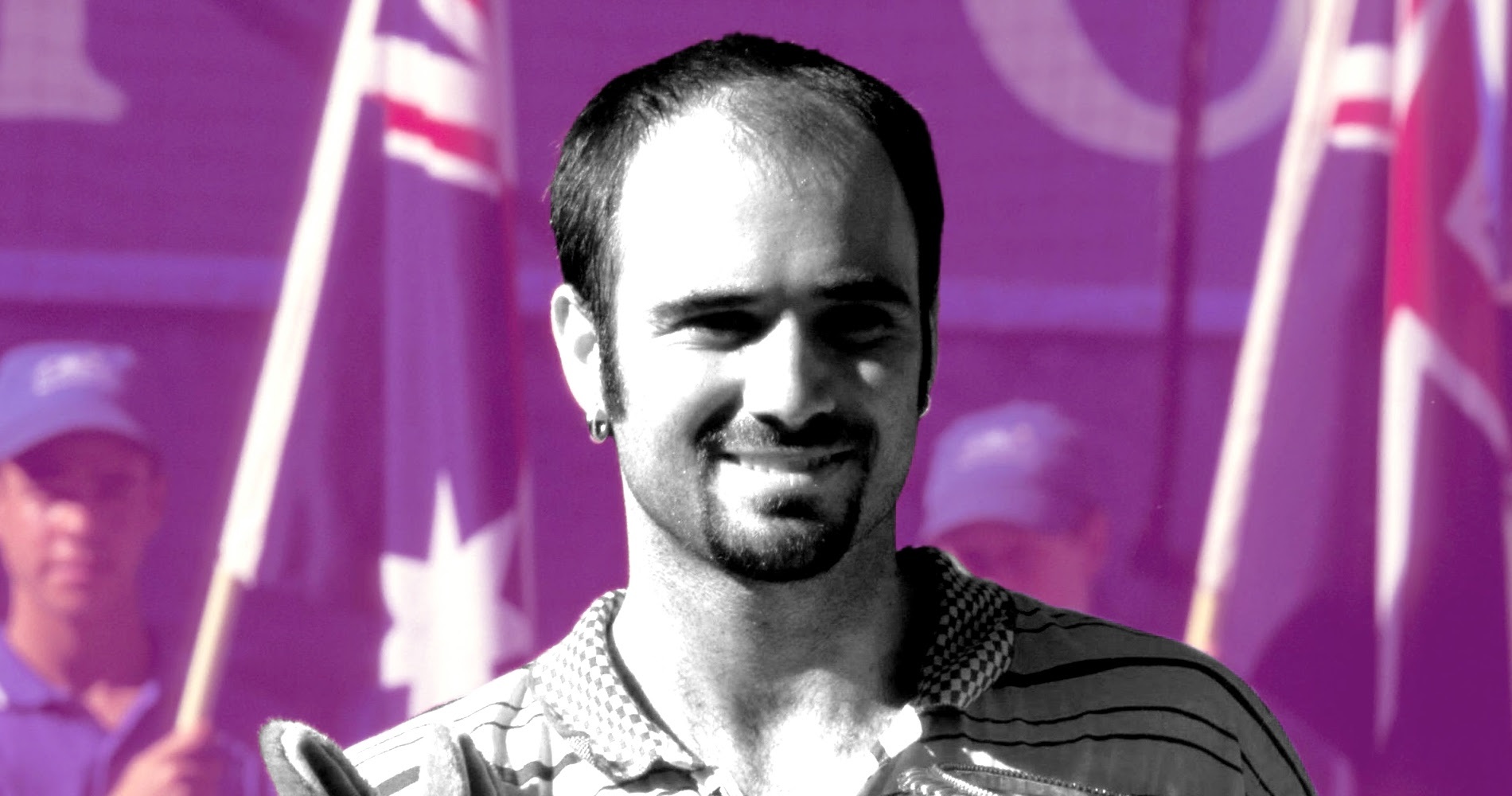 Andre Agassi, On this day 10.04.2021
Andre Agassi, On this day 10.04.2021
What happened exactly on that day?
On this day, April 10, 1995, Andre Agassi became world No 1 for the first time, overthrowing his rival, Pete Sampras, who had been sitting on top of the ATP rankings since September 1993. Winner of the two last Grand Slam tournaments, the Las Vegas Kid finally reached the pinnacle of his sport, after years of ups and downs.
The players involved: Andre Agassi
Andre Agassi, the Las Vegas Kid, was one of the biggest stars in tennis history. He turned professional in 1986 and soon become famous, thanks not only to his incredible tennis skills but also his interesting outfits, including the iconic denim shorts and the pink bike shorts (worn as an underlayer). Taught by his father and bred at the Nick Bollettieri Academy, his game relied on a great return (the best of its time) and on hitting the ball on the rise on both sides with incredible power, which was revolutionary at the time and then copied by generations of tennis players.
Andre Agassi’s breakthrough year was 1988: not only did he claim six titles, but he also reached the semi-finals at Roland-Garros, defeated by Mats Wilander (4-6, 6-2, 7-5, 5-7, 6-0), and at the US Open, where he lost to Ivan Lendl (4-6, 6-2, 6-3, 6-4). In the years 1989-1991, despite many great results, Andre Agassi, who had been the first American player from his generation to hit the spotlight, saw his rivals triumphing in major tournaments, whereas he missed several opportunities.
At the 1989 French Open, he lost to Jim Courier in the third round (7-6, 4-6, 6-3, 6-2) and witnessed countryman Michael Chang, 17 years old, lift the trophy. In 1990, the Las Vegas Kid got close to a Grand Slam triumph, but in the Roland-Garros final he surprisingly lost to Andres Gomez (6-3, 2-6, 6-4, 6-4), and at the US Open, he finished runner-up to Pete Sampras (6-4, 6-3, 6-2).
When he lost a third Grand Slam final at Roland-Garros in 1991 (beaten by Jim Courier, 3-6, 6-4, 2-6, 6-1, 6-4), experts started to wonder if Agassi was ever going to win a major tournament. It finally happened in 1992, at Wimbledon, the most unlikely place, in a tournament that he had skipped three times before (1988-1990). This time, in the final, he defeated Goran Ivanisevic, in a contest between the best server and the best returner in the world (6-7, 6-4, 6-4, 1-6, 6-4).
At the end of 1993, Agassi had to undergo surgery after a wrist injury had ruined his season. Back on the tour in 1994 with a new coach, Brad Gilbert, he reached the final at Key Biscayne in spring, and, in summer, after winning the Toronto Super 9, he claimed a second Grand Slam title at the US Open (defeating Michael Stich, 6-1, 7-6, 7-5).
After another great success at the Paris Indoors, he started 1995 as world No 2, but after defeating Sampras in the Australian Open final to clinch a second consecutive major title, he was aiming at the world No 1 spot. He got even closer to the top in March, when he faced Sampras in both finals of the “Sunshine Double”, defeated at Indian Wells (7-5, 6-3, 7-5), before taking his revenge in Miami (3-6, 6-2, 7-6).
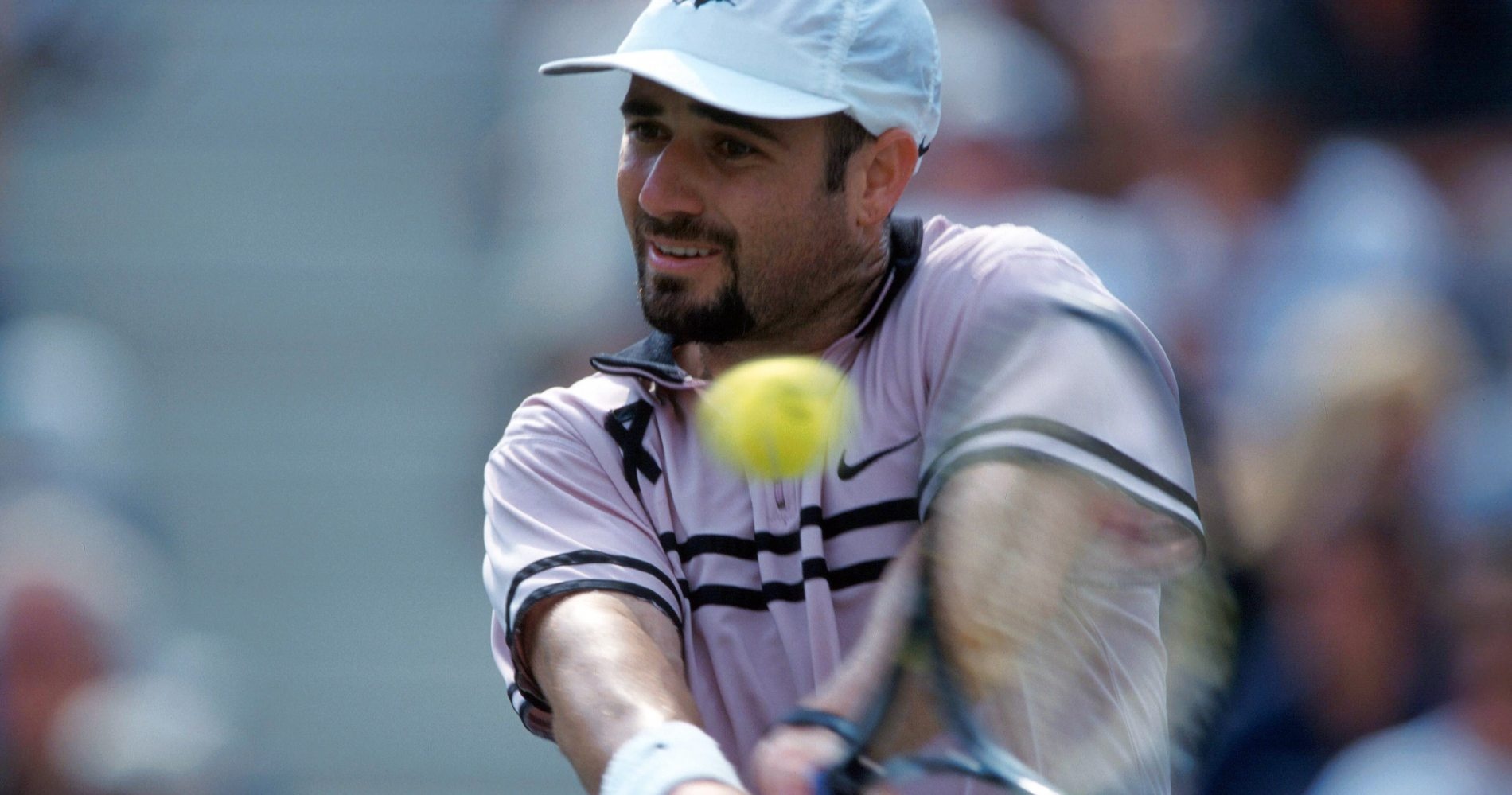
The facts
After his success at the 1995 Australian Open, it seemed obvious that Andre Agassi was on his way to becoming world No 1. Ranked No 2 at the end of 1994, after having claimed his second Grand Slam title at Flushing Meadows, his game had become much more consistent since he was coached by Brad Gilbert. More patient, the Las Vegas Kid was also fitter than ever. He had dropped his ponytail and, with his head shaved and his pirate headband, he showed no mercy to his opponents.
Since the start of 1995, he had only lost twice, the first time against Thomas Enqvist in the Philadelphia semi-finals (7-6, 5-7, 6-2), and the second time in Indian Wells, against his biggest rival, the world No 1, Pete Sampras (7-5, 6-3, 7-5). When Agassi defeated Sampras in the Miami final (3-6, 6-2, 7-6), he got closer than ever to the top spot.
In order to remain world No 1, Sampras now had to defend his titles in both Tokyo and Osaka. However, after having reached the finals at both Indian Wells and Miami, and after having then taken part in a Davis Cup tie against Italy, Pistol Pete needed to recover. He decided not to compete in Japan, which automatically ensured that Agassi would become world No 1 for the first time on April 10.
For the Las Vegas Kid, who had been considered as a potential No 1 for years, it was a major achievement, but in his mind, it wasn’t the ultimate goal.
“I think No 1 is a by-product of continuing this kind of intensity, focus and concentration, and just executing your game plan every time you step on the court,” he said, according to Tennis.com. “It’s just one match at a time for me. (…) When you’re No 1, people raise their level and play stronger against you; that’s the downside. But the upside to it is that it’s a little nerve-wracking trying to beat the top guy when you might not get that opportunity again for a long time, so it creates a certain amount of nerves, I think. Either way, you’ve got to win to be No. 1 and you’ve got to win to stay No 1. If you don’t, it’s not going to last very long.”
His next goal was now to win Roland-Garros, where he had lost two painful finals in the past, in 1990 and 1991, but was now the only Grand Slam title missing from his list of achievements.
What next
Agassi would not manage to triumph at Roland-Garros in 1995, defeated by Yevgeny Kafelnikov in the quarter-finals (6-4, 6-3, 7-5). In fact, it would take him four years to claim another Grand Slam title. In 1995, defeated by Boris Becker in the Wimbledon semi-finals (2-6, 7-6, 6-4, 7-6), he would remain undefeated during what he would call himself the “summer of revenge”.
After having claimed four consecutive titles, he would be defeated in the US Open final by Pete Sampras (6-4, 6-3, 4-6, 7-5). Extremely disappointed, he would only play one other tournament until the end of the season. In 1996 and 1997, despite a gold medal claimed at the 1996 Olympic Games in Atlanta, Agassi would have a very hard time and his ranking would drop as low as No 141 in the world.
Displaying great humility, he went back to play on the ATP Challenger Tour at the end of 1997 to regain confidence. In June 1999, he would finally triumph at Roland-Garros, defeating Andrei Medvedev in five sets (1-6, 2-6, 6-4, 6-3, 6-4), thus achieving a career Grand Slam.
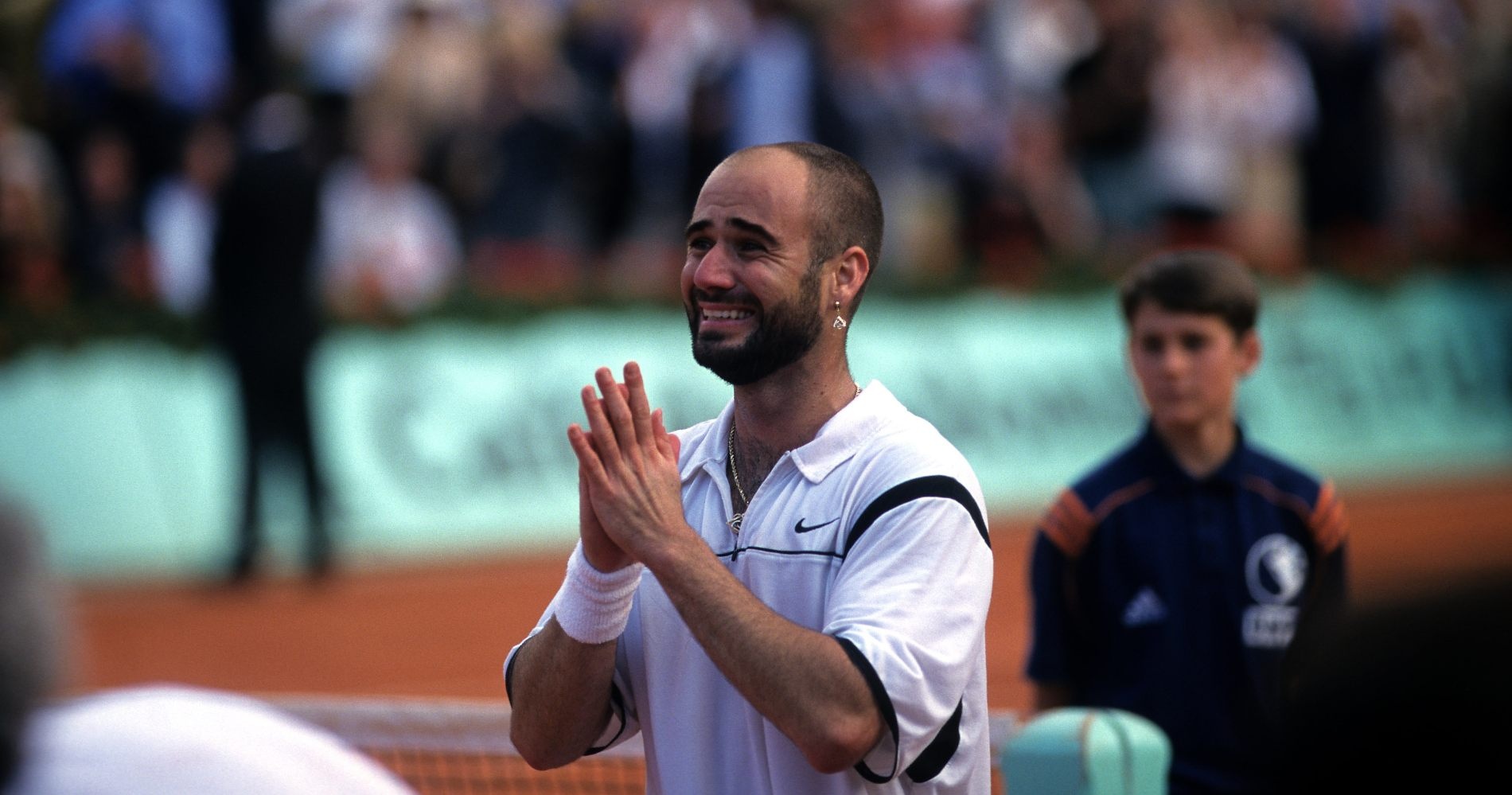
He would then finish runner-up to Pete Sampras at Wimbledon (6-3, 6-4, 7-5) and claim another Grand Slam crown at Flushing Meadows, defeating Todd Martin in the final (6-4, 6-7, 6-7, 6-3, 6-2). Thanks to that second US Open title, Agassi would reclaim the world No 1 spot, more than three years after having lost it. He would then claim a second US Open crown and regain the No 1 seat for another 52 weeks.
In the following years, Agassi would add three more Australian Open titles to his career achievements (2000, 2001, 2003), holding a total of eight Grand Slam titles, and he would appear for the last time at the top of the ATP rankings on September 7, 2003, having spent a total of 101 weeks as world No 1. In 2005, aged 35, he would still reach his last Grand Slam final in New York, where he was defeated by Roger Federer (6-3, 2-6, 7-6, 6-1).
Only in 2006 would he leave the top 10 once and for all. Playing only eight tournaments, he would put an end to his career at Flushing Meadows. After delivering a last epic fight to prevail against world No 8 Marcos Baghdatis (6-4, 6-4, 3-6, 5-7, 7-5), he would be defeated by Benjamin Becker in the third round, 7-5, 6-7, 6-4, 7-5.
